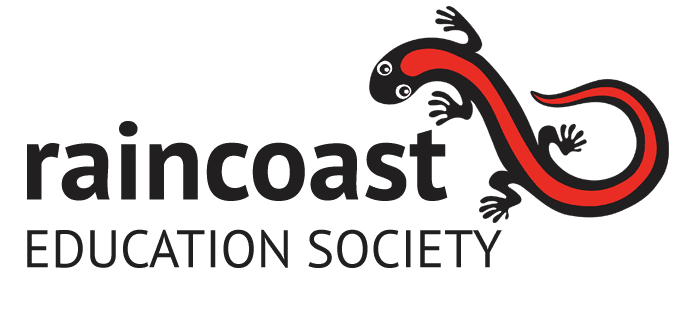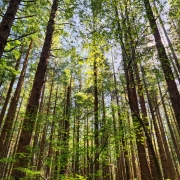Tl’aaya-as: Revitalising Nuu-Chah-Nulth root gardens
February 1, 2008 | Jen Pukonen
Many generations of Nuu-chah-nulth First Nations have relied on local resources to provide a healthy and sustaining diet. Root vegetables growing in tidal flats and at river estuaries were an important part of that traditional diet. Tasty and nutritious, these roots were carefully tended and nurtured to make them as productive as possible. More recently, the Nuu-chah-nulth diet has changed, and these roots are no longer as well known.
The Tl’aaya-as project was inspired by members of the Nuu-chah-nulth communities of Clayoquot Sound to revitalize these food traditions as a way of promoting and maintaining important traditional knowledge about health and the environment. Tl’aaya-as (pronounced: Tl’eye-yuh-us) is a Nuu-chah-nulth word, suggested by Trudy Frank and Lena Jumbo of Ahousat, that means “growing in, on, and out of the earth,” and refers to a garden. This project has been the focus of my graduate research for the past two years.
The Tl’aaya-as project has engaged students and community members of all ages in the research and re-creation of a Nuu-chah-nulth root garden of kuuxwapiihmapt (northern riceroot), tlicy’upmapt (Pacific silverweed) and ?a?iic’uqmapt (springbank clover)*. Ahousaht community members have guided all stages of the garden’s development and have offered many great ideas and suggestions. Over the past two summers, six high school students from Ahousaht have helped with the fieldwork, which included getting to know local plants, planting and tending to a root garden, organizing community steam pit cooking events and preparing an educational poster for the Ahousaht school about root gardens. The students and I also spent time talking to people in the community to learn about traditional plant foods and management techniques and to gather ideas, suggestions, and feedback about the project.
Root gardens like the ones we are restoring were historically important to First Nations all up and down the bc coast. For the Nuu-chah-nulth, the gardens were part of the hahuulthi system of ownership and chief’s responsibilities. The roots were highly valued as an important food source and were often eaten in large quantities at feasts, as well as for everyday meals. To produce enough of these roots to feed the communities, the Nuu-chah-nulth would carefully tend their gardens, weeding out other plants, churning the soil with special digging sticks, and selectively harvesting and replanting rootlets to grow for the next years’ harvests. Like most Nuu-chah-nulth food practices, this type of gardening was sustainable in the long-term, producing an abundance of food without degrading the land. River estuaries and tidal marshes are one of the most productive types of habitat and were ideal for root gardens.
The sustainable harvesting of these roots vegetables required a great deal of knowledge and respect that was developed over many generations. Many of the plants formerly cultivated by the Nuu-chah-nulth are now quite rare in their natural habitat, and their populations can be severely harmed by just a few wild harvesters. In addition, mistaken identification or misuse of wild plant foods can be very dangerous. Always be careful eating wild plants!
A great way to enjoy rare wild foods is to grow them at home. Growing native plants is a very rewarding experience. To enjoy native plants in your own garden, grow them from seed or cuttings, or buy them from a reputable nursery. Native plants are best adapted to our local climate and once established, seldom need much care. They also provide habitat for wildlife, especially birds, butterflies, and insects.
We hope that raising awareness and appreciation of the respectful relationships with the natural environment reflected by the root gardens and their use can help provide a model for local stewardship and conservation and in turn will support vibrant communities, a healthy environment and a more sustainable society
To learn more about Nuu-chah-nulth root gardens and the Tl’aaya-as Project, join us for a slide show at the Clayoquot Field Station on Wednesday, Feb 13th at 7:30 pm.
Jen Pukonen is a naturalist with the Raincoast Education Society.
Acknowledgements
I feel so lucky to have had the opportunity to coordinate this project and would like to extend a heartfelt thank you to the community of Ahousat for sharing their time, knowledge and enthusiasm with me and to the Raincoast Education Society and my supervisors Nancy Turner and Ahousaht Hawilth Richard Atleo, Umeek for their guidance and support.
* Plant names are in Ahousaht, a Nuu-chah-nulth dialect.



